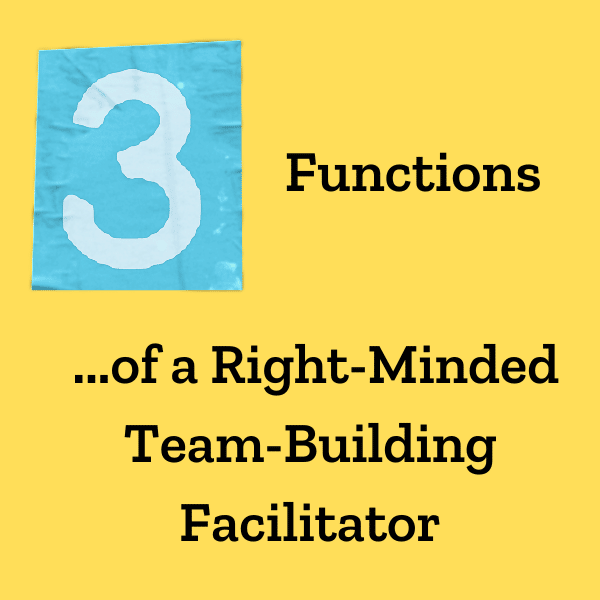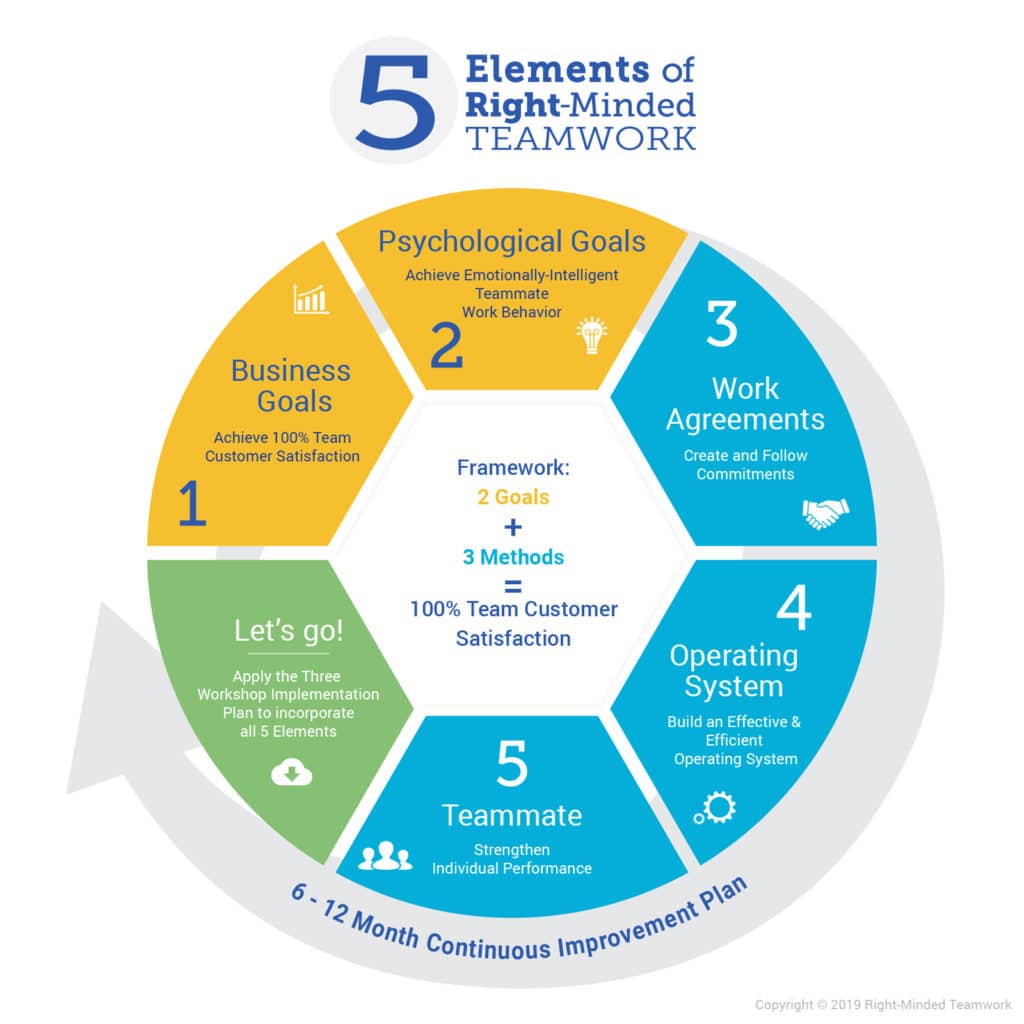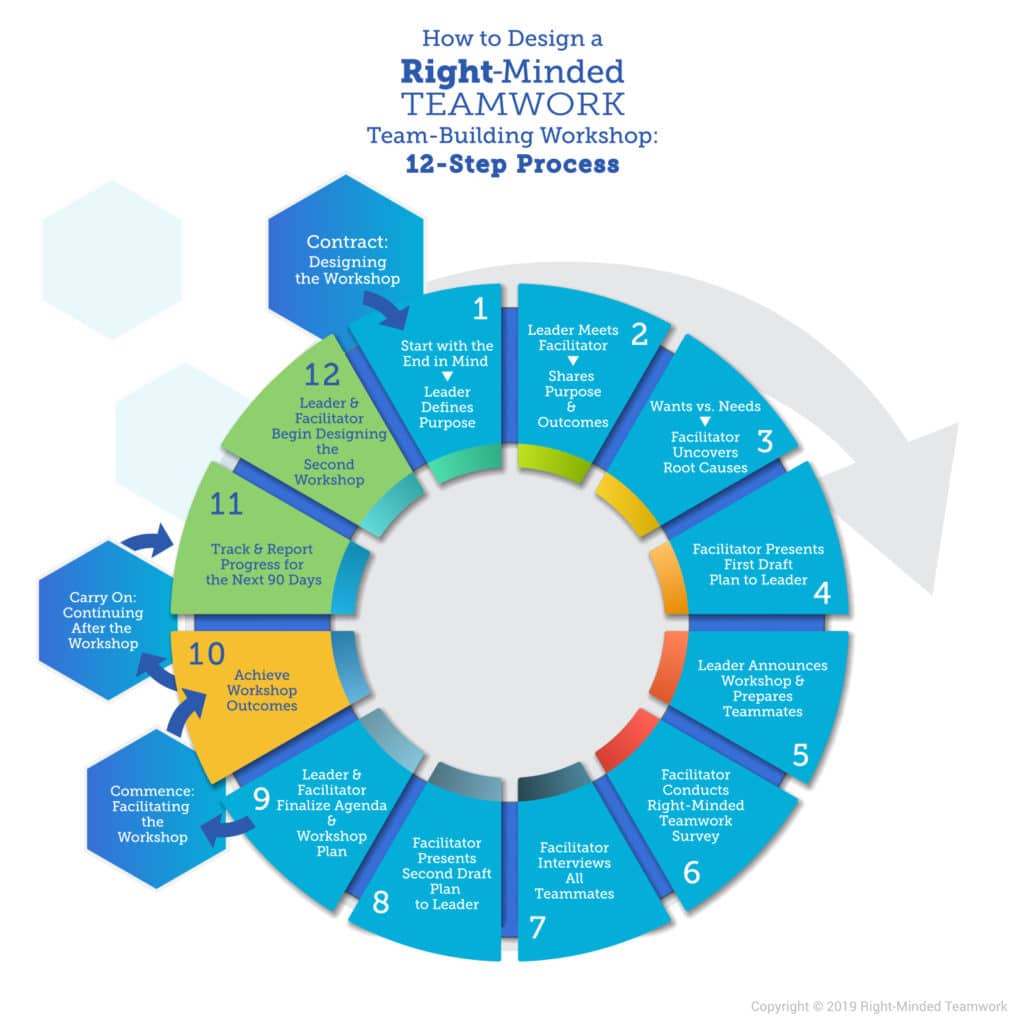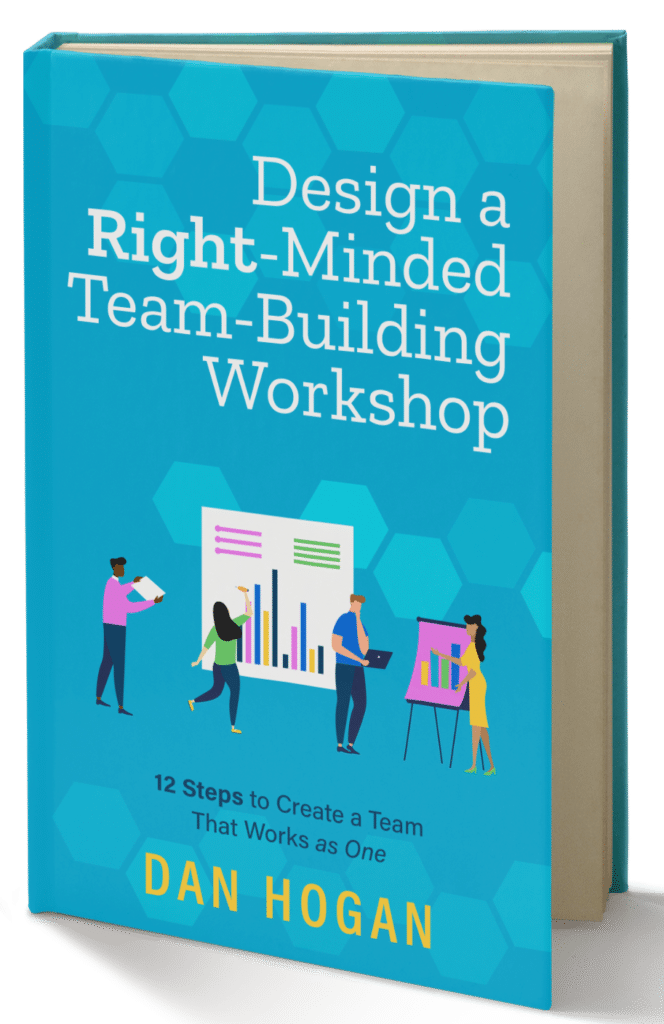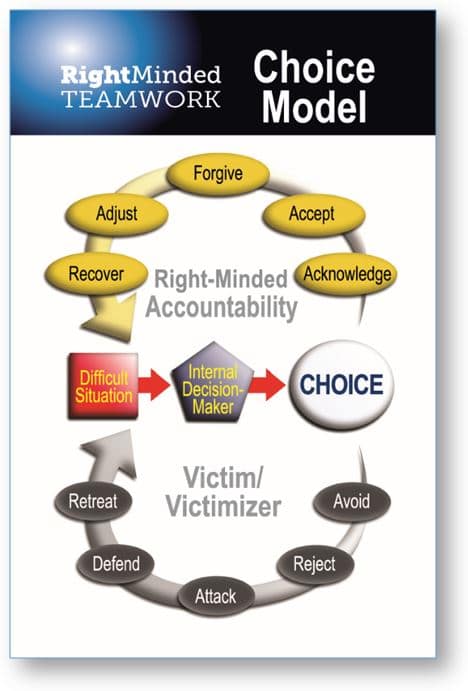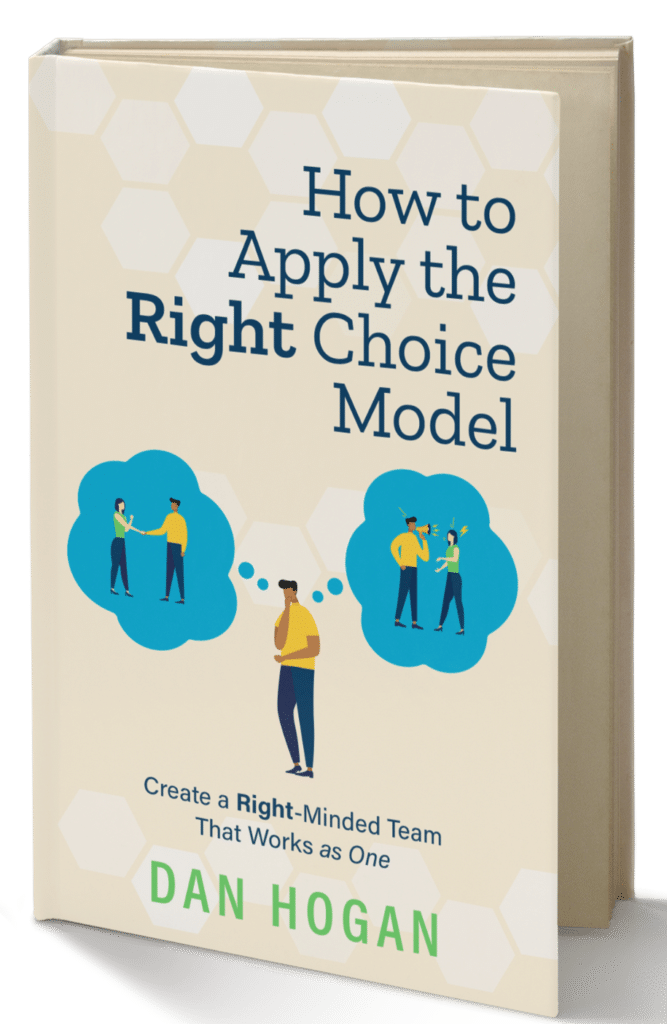Masterful team-building facilitation is the art and science of weaving together three functions, as well as the conscious choice to not over-function.
Table of Contents
The 3 functions of a team-building facilitator are:
- Design Workshops
- Facilitate Workshops
- Teach in Workshops
…and when you over-function, that means you are doing too much for others when they would be better off doing it for themselves.
Art & Science of Facilitation
Let’s start with a high-level explanation.
The “art” of team-building facilitation is about your ability to interact with teammates in an effective way. When you exhibit artful facilitative behavior, you help teammates immeasurably because your demeanor is teaching Right-Minded Attitudes and Behaviors. Those choices are the most effective teamwork practices according to those who write about emotional intelligence in teamwork.
Said another way, if you come across as an egotistical, know-it-all facilitator, your behavior will anger teammates, create resistance, and will hurt the team-building effort. So, no matter what, keep improving your interaction and communication skills if you want to succeed as a team-building facilitator.
The “science” of facilitation is your knowledge of the best ways teams should operate, and your ability to communicate that advice. This means you have in-depth knowledge of team goals, individual roles, team meetings, decision-making protocols, and for sure, implementing a continuous improvement process like the 5 Elements of Right-Minded Teamwork.
Let’s take a closer look at the 3 team-building facilitator functions.
1. Design Workshops
Your goal is to design a team-building workshop that teammates can’t wait to attend.
The art is your ability to enlist teammates in helping you design a practical plan that, by default, creates teammate engagement. Makes sense, doesn’t it?
The science of good design is making sure you don’t miss important team-building steps. The best way to do that is to follow the Right-Minded Teamwork 12-Step Process. It’ll get you where you want to go.
It’s a thorough checklist of all the key design steps. For an in-depth understanding of how to design a successful plan and workshop, purchase the ebook “Package” which enrolls you in our free online course.
2. Facilitate Workshops
The art of facilitation is all about your ability to effectively manage or guide teammate interactions and communications during the workshop so that they successfully address and resolve their teamwork issues.
The science of facilitation is about effectively managing and guiding the workshop processes and exercises.
If you are looking for facilitation training classes, it’s best to ask people in your network for referrals.
Check out these two groups: the International Association of Facilitators (IAF) and the International Institute for Facilitation (INIFAC). IAF conducts conferences where you can attend abbreviated training sessions on many facilitation topics. Even though these two fine organizations don’t offer training classes, they are advancing the practice of professional facilitation.
Both organizations offer facilitation certifications. IAF offers a Professional level and INIFAC offers a Master level certification. You may want to check them out. I am proud to have served on the INIFAC Board and equally proud to have earned both credentials.
3. Teach in Workshops
Teaching is not always necessary; nevertheless, it is a very important facilitator function. It’s usually required when a team is stuck and just needs a clearer method for dealing with a teamwork issue.
The art of teaching is your genuine, whole-body expression that you are there to help teammates achieve their team-building workshop outcomes.
The science is your ability to quickly and effectively impart teamwork knowledge, so the student understands it and is motivated to use the skill.
The most effective teamwork tool I have taught in my three decades of facilitation is the Right-Minded Choice Model.
Right-Minded Choice is an emotionally intelligent teamwork process. When you teach Choice at the beginning of your team-building workshops, I can almost guarantee the concept of choice will create the right “mindset” in your teammate’s minds and hearts. Teammates will now be more willing to address their team issues and create team Work Agreements that surely will resolve their teamwork issues.
But, don’t over-function, either!
The term, “over-function” means you are doing way too much for someone else when they would be better off doing it for themselves.
The most common situation I’ve experienced is when teammates want me, the team facilitator, to fix another teammate. Don’t get me wrong, you and I can partner with others to ‘fix’ the teammate, but we are not 100% responsible.
Think of the classic story about teaching a man to fish.
You give a man a fish and feed him for a day. You can teach him how to fish and feed him for a lifetime.
Think for a moment. Where are you and with whom are you over-functioning? Pick one person and begin the process of creating a new working relationship with them. Stop giving them a fish; teach them to fish, and you’ll be glad you did!
Next Steps
For more about designing a workshop, check out Design a Right-Minded, Team-Building Workshop: 12 Steps to Create a Team That Works as One.
For more about teaching the Right Choice Model, check out How to Apply the Right Choice Model: Create a Right-Minded Team That Works as One.
To your success
